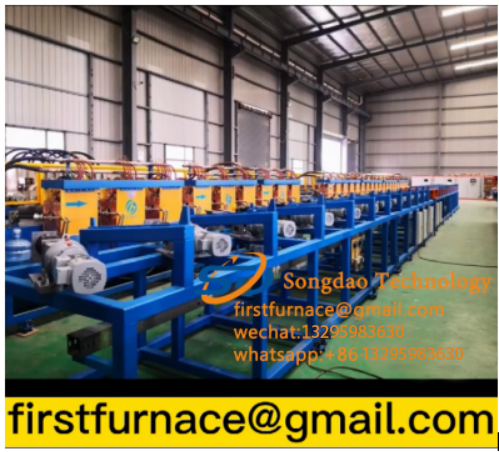- 21
- Jan
The secret of maintenance of steel bar quenching and tempering production line
The secret of maintenance of steel bar quenching and tempering production line
သံမဏိတံ မီးငြှိမ်းသတ်ခြင်းနှင့်အပူထိန်းထုတ်လုပ်မှုလိုင်း should have full-time operators at ordinary times. The operators are required to understand the working principle of the power supply, be familiar with the operating procedures, and master general maintenance knowledge. During the operation, they should always inspect for abnormal temperature rise and abnormal noise. Whether the water-cooling system is leaking, whether the cooling water outlet of each channel is unblocked, whether the indications of various instruments are normal, and make a record according to the regulations, often check the thyristor’s voltage equalization resistance, the resistance-capacitance absorption element wiring is intact, and regularly check the rectification with an oscilloscope Bridge output waveform, intermediate frequency output waveform (check whether the lead angle is normal), and inverter thyristor waveform (check dynamic voltage equalization). Also pay attention to doing a good job of daily cleaning. In addition, every six months to one year or the end of a project, regular maintenance should be carried out. The content is as follows.
1. Comprehensive cleaning inside and outside, including cleaning and inspection of various solder joints, cleaning of relays, contactors, contacts and iron cores, replacing circulating water, removing scale from the water cooling system, and replacing aging and deteriorated water pipes.
2. Check the insulation and plug the capacitor for oil leakage or replace it.
3. Measure the waveform of each thyristor (at light load, rated load and rated power), and analyze whether its characteristics have changed.
4. Comprehensive inspection of the control circuit and trigger system, including the measurement of various levels of waveform, voltage measurement, phase shift inspection of rectifier trigger pulses, and protection operation reliability inspection.
5. Measure the inverter output waveform and check whether the safety margin has changed significantly.
6. Calibrate meters and protective relays.
7. Measure the voltage equalization resistance and resistance-capacitance absorption resistance of each thyristor.
8. Tighten the connecting bolts of the conductive parts and the screws for fixing the terminals and components.

